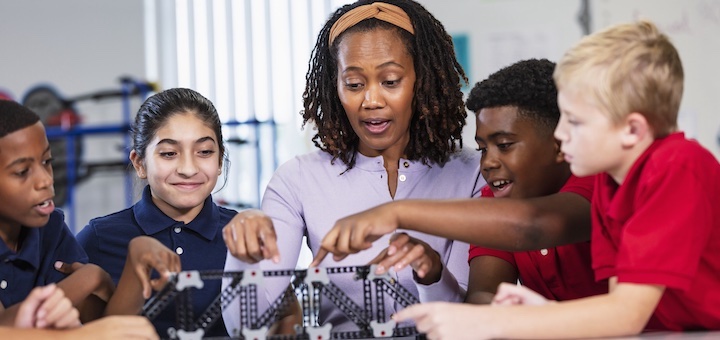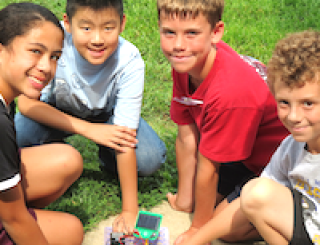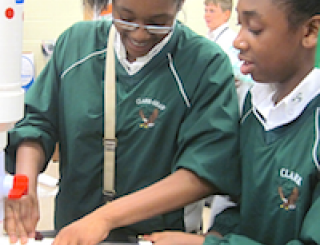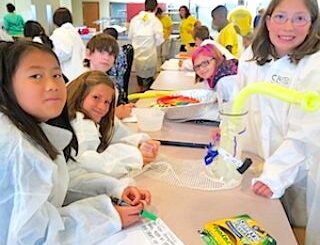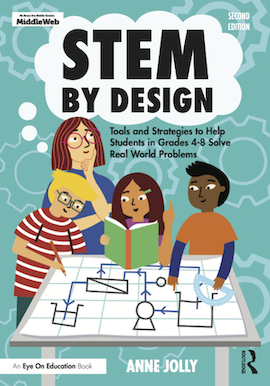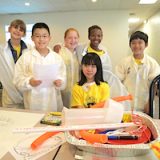Addressing Life and Leadership Skills in STEM Class
The World Health Organization defines life skills as “abilities… that enable individuals to deal effectively with the demands and challenges of everyday life.” Life skills have also been variously defined as social skills, skills you need to make the most out of life, and abilities that promote wellbeing and competence, and the ability to establish productive interpersonal relationships and make rational decisions.
In this book, we’ll define life skills as foundational skills that students develop and practice to help them thrive in school, families, 21st-century workplaces, and a complex, changing world.
Since life skills were previously assumed to be a by-product of home training, schools seldom included life skills as part of their academic content. Now, however, the nature of work has changed from mechanical, knowledge-based jobs to jobs requiring interpersonal skills, ingenuity, and creativity. Employers routinely say teamwork, collaboration, communication, and flexibility are essential, and bemoan these traits as hard to find in young job applicants.
The school setting provides the most realistic setting to teach life skills. As they interact with peers, children practice life skills in real time with immediate feedback and opportunities for reflection and growth. Your STEM projects can serve as an equalizer and provide all of your students with opportunities to learn and practice life skills.
What life and leadership skills will you address?
I’ll suggest some age-appropriate life skills you can include in STEM projects and propose ideas for some ways you can do that. Of course, I won’t address all life skills – just some that fit naturally within most STEM projects and prove helpful competencies for students.
Choose a life skill for kids to practice each day as they work on STEM projects. In some cases, you may choose two related life skills. For example, in the Listen carefully category, students could work on both Pay close attention and Do not interrupt others at the same time. Students should continue to practice previous skills as you add new life skills.
I lumped the life skills I’m including into categories for the purposes of STEM work. Note that the category descriptors have no official status – they are just organizers. Use them as information and reorganize in a way that works for you.
Solve problems effectively. This skill was near the top of everyone’s list. Business needs workers who can recognize problems when they occur and find solutions for existing challenges. As a STEM teacher, you’re already on top of this one! This skill is at the heart of every STEM project you lead. In your STEM projects kids routinely identify problems (challenges) and work systematically on finding solutions.
Be a good team member. Business also lists the ability to function well as part of a team as a crucial skill. They want team members with collaborative know-how, different skill sets, persistence, and who act on behalf of the entire team.
Communicate well. Being able to effectively communicate always wins a top spot as one of the most important skills. This skill allows people to share their thoughts, ideas, and feelings in a way others can understand. This area often requires extra persistence and personal development on the part of students.
Listen carefully. Effective listening skills enhance the workplace’s efficiency and collaboration. They help employees solve problems and resolve conflicts, and can promote good relationships and personal growth.
Work well with team members from different backgrounds and ethnicities. In school, students interact with a wide variety of people including peers from different backgrounds, cultures, and perspectives. Being able to understand and work with diverse people helps in understanding and dealing with problems facing society. Likewise, working with diverse peers adds value to STEM projects and teaches kids to understand and appreciate differences in others.
Show empathy. Being able to understand and share the feelings of others significantly improves professional (and personal) relationships. Empathy involves understanding another’s experiences and perspective and fosters a more positive workplace environment. This skill includes the unique ability to get inside someone’s head and imagine how they feel, and to look at things from their point of view.
Be persistent. This skill features maintaining your effort and commitment even in the face of obstacles or setbacks. No wonder businesses want employees with this life skill. The world of work is peppered with roadblocks, potholes, and detours. Reaching the goal in spite of those barriers requires ongoing persistence.
Make good choices and decisions. In the business world, making good decisions is crucial for success. Good choices and decisions keep you heading in the right direction to accomplish a goal. This skill requires analyzing information, being willing to push back your own biases, and being willing to use the information that helps you make the right choice.
Be the best you can be in your work and behavior. This skill involves continuous self-improvement and personal growth. Businesses value employees who embrace lifelong learning and stay up-to-date on job skills, including technology skills, in this rapidly shifting workplace. They also value responsible employees who continually cultivate important life skills.
Try this procedure to introduce life skills in STEM
Your STEM project will mirror life skills needed for business and industry employees. As you consider particular life skills students need, decide on specific ways you can introduce and address those skills during your STEM projects. The following procedure seems to work well for introducing and facilitating kids learning life skills. You may want to try it or come up with your own.
- Identify one (or two) new life skills per lesson for kids to practice. As they add new skills, students should always continue practicing skills they previously learned.
- Explain the importance of life skills before students begin their project work. Be enthusiastic about how this skill can help them as you explain it. Good life skills will help them build friendships, good work habits, and competencies they can use at home, school, and other places they go.
- Introduce the specific life skill students will learn that day. Begin doing this on the first day of the project and introduce a new life skill each day. Lead students in a discussion of what that life skill might look like and sound like when they practice it.
- Keep the life skill front and center during the STEM lesson. Use visuals to remind students what skill(s) they are working on and keep them aware of opportunities to practice the skill. At appropriate times, gently remind students to use a particular skill or compliment someone who is practicing it. (Avoid critical or negative feedback.)
- Include a Reflection time following each lesson. Give individuals or teams time to do a quick self-assessment and think about their progress with that skill. Invite them to consider when and how they used a particular life skill, how well they think they did, what issues they encountered, and what they think their next steps should be.
Schools might consider prioritizing the same skills during regular classes and making them part of students’ daily class routines and discussions. In this way, your students will remain constantly aware of opportunities to practice those skills. The real pay-off comes as they begin to consistently use these life skills in other areas of their lives.
You are definitely preparing your students for the world they will enter – whether a 21st-century workforce, higher education, or life as informed, productive citizens.
For more detail and information about this content, see Chapter 12 in STEM by Design.
Text from Chapter 12 of STEM by Design by Anne Jolly (Routledge 2025). All Rights Reserved.

